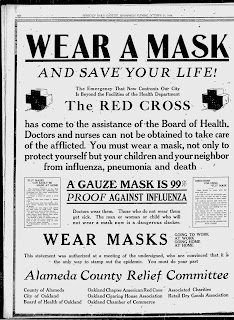It's interesting to read that GoFundMe is withholding the $4.7 million raised on its platform by the so-called "Freedom Convoy" of Canadian truckers opposed to the vaccine mandate for essential workers crossing the Canada-USA border (in both directions: the US has imposed similar restrictions). It had never occurred to me that they would be allowed to do so.
In its statement, the crowd-funding platform says, "We require that fundraisers be transparent about the flow of funds and have a clear plan for how those funds will be spent". Fair enough, but the campaign states that the funds will be used for food, fuel and lodgings for the truckers involved. Isn't that clear and transparent enough?
It is estimated that some 16,000 (about 13%) of the 120,000 Canadian truckers who regularly travel across the border are not vaccinated, and these are the individuals who will lose their jobs (or be forced to change their jobs) as a result of the government's vaccine mandate. But, you know, they've had a long time to fix that, and they have deliberately chosen not to, and I don't have a whole lot of sympathy for them. These are people who believe that they have a right to do what they want when and where they want it, and that's just not how the social contract works. Sorry.
I've read letters suggesting that long-distance truckers don't really interact with anyone, just some spending all their time on their own in the right cab, so why the need for vaccination? But clearly that is rubbish: as another letter points out, truckers routinely interact with dispatch offices, warehouses, truck stops, publish washrooms, coffee shops, repair shops .. oh, and their own homes and family dwellings.
And I think that we, as a country, could probably afford to have 13% of our food missing from grocery shelves anyway, at least temporarily, although frankly that is unlikely to happen anyway, despite what some followers and some Conservative MPs would have you think...
It's hard to be sympathetic to the protesting truckers or the organizing group, which, incidentally, is bizarrely called Canada Unity, in a grand feat of Orwellian doublespeak. The Liberals oppose the "Freedom Convoy", especially given some of the violent language that has been circulating on social media, as does the NDP and the Canadian Trucking Association (the Conservatives, predictably, are unwilling to oppose them, and several prominent Conservative MPs have been outspoken in their support of the Convoy).
It has had a lot of online support from a whole host of right-wing extremists - because don't think this is just about truckers and vaccine mandates, it's about FREEDOM! - both in Canada and, for some reason, the US, including Joe Rogan (no surprise there) and Elon Musk (probably no surprise there either). Oh, and that Donald Trump guy. Some Canadian supporters are openly calling it "Canada's Jan. 6" and some are even flaunting swastikas and, bizarrely, Confederate flags And "Trump 2024" signage. When asked what they want, participants tend to yell "Freedom!" and, if pressed, mumble something about "tyrants" and "my body, my choice", a phrase they have obviously heard somewhere.
And yes, the far right is integrally involved with this, even if some of the attendees are in fact bona fide truckers, and white nationalist groups are encouraging their members to get involved with the protest. The main organizer and instigator of the Convoy, Tamara Lich, is a member of the western separatist Maverick Party. Not a trucker. A top Ontario organizer for the protest, Jason LaFace (also not a trucker), made his position very clear: "This is no longer about the mandate any more [sic]."
And, make no mistake, this is no longer a protest - this is a blockade, this is an occupation (I have also heard it called "terrorism", "assault on democracy", "insurrection" and "seige", the latter, incidentally, from a Conservative politician), and, as such, no longer legal or covered by the Canadian Charter of Rights and Freedoms. As they make their way to Toronto this weekend, Twitter hashtags like #GoHomeFluTruxKlan are already springing up, so they are on no doubt what the locals think.
But, before I go off on too much of a rant, and returning to my original point: interesting that a fundraising platform like GoFundMe can actually withhold funds already raised. Go GoFundMe!
UPDATE
With the Freedom Convoy's GoFundMe campaign now sitting at around $10 million, the crowd-funding platform has now asserted that it no longer meets its terms of service (citing its "promotion of violence and harassment"), and is closing it down.
Donors can apply for refunds, and any funds not withdrawn will be given to a worthier charity. Which I think is just dandy.
Of course, it won't end there. Bizarrely, extremo Florida Governor Ron DeSantis is sticking his oar in, and calling for an investigation, although, just before his announcement, GoFundMe revised its plan and is now saying that all donations will be refunded.





